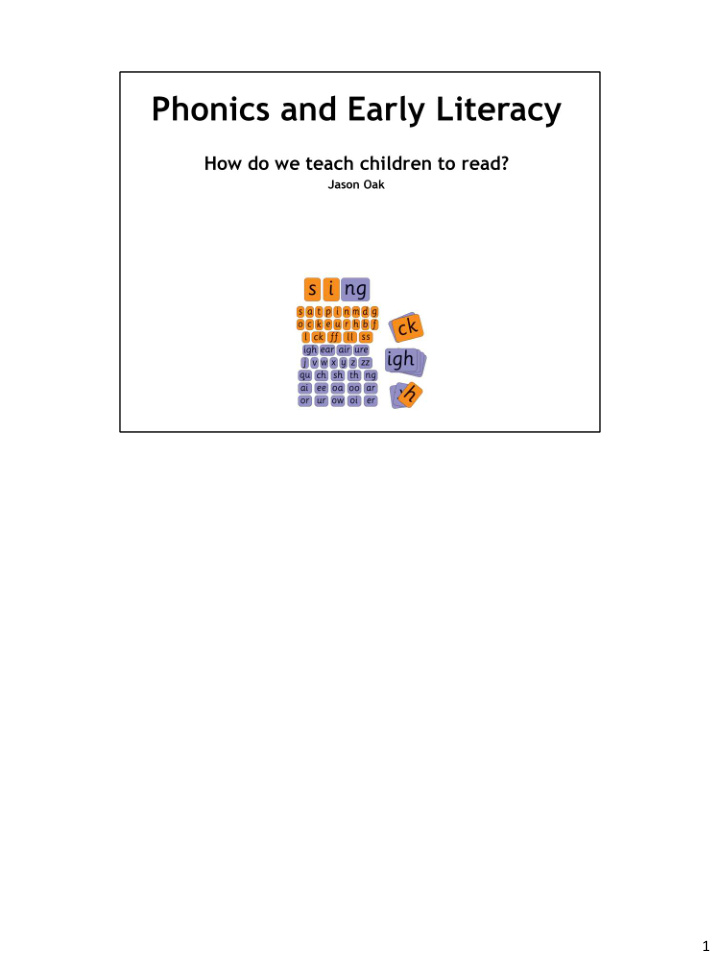



1
2
Learning to read starts with the letters of the alphabet. In nursery and Reception children start to the names of the letters, as well as the letter sounds. 3
4
5
6
7
8
9
This is a video for Australian teachers, so some of the resources mentioned here are not used in this school, but it does explain very well how segmenting and blending work in practice. 10
11
In UK schools, and this one, we teach synthetic phonics. This is where we teach the phonemes (sounds) associated with the graphemes (letters) at the rate of about six sounds per week. The sounds are taught in isolation then blended together (i.e. synthesised), all-through-the-word. For example, children might be taught a short vowel sound (e.g. /a/) in addition to some consonant sounds (e.g. /s/, /t/, /p/). Then the children are taught words with these sounds (e.g. sat, pat, tap, at). They are taught to pronounce each phoneme in a word, then to blend the phonemes together to form the word (e.g. /s/ - /a/ - /t/; "sat"). 12
Activities are divided into seven aspects, including environmental sounds, instrumental sounds, body sounds, rhythm and rhyme, alliteration, voice sounds and finally oral blending and segmenting. 13
Learning 19 letters of the alphabet and one sound for each. Blending sounds together to make words. Segmenting words into their separate sounds. Beginning to read simple captions. 14
The remaining 7 letters of the alphabet, one sound for each. Graphemes such as ch, oo, th representing the remaining phonemes not covered by single letters. Reading captions, sentences and questions. On completion of this phase, children will have learnt the "simple code", i.e. one grapheme for each phoneme in the English language. 15
No new grapheme-phoneme correspondences are taught in this phase. Children learn to blend and segment longer words with adjacent consonants, e.g. swim, clap, jump. 16
Now we move on to the "complex code". Children learn more graphemes for the phonemes which they already know, plus different ways of pronouncing the graphemes they already know. 17
18
Working on spelling, including prefixes and suffixes, doubling and dropping letters etc. 19
20
21
22
23
Recommend
More recommend